2018 Trek Slash 9.8
(discontinued)
| Where To Buy | |||
|---|---|---|---|
Free standard shipping on all bikes (continental U.S. only).
Flat rate shipping to Hawaii and Alaska. |
Free standard shipping on all bikes (continental U.S. only).
Flat rate shipping to Hawaii and Alaska. $3,999.93
|
||
Slash 9.8 XT Gen 5
$3,999.93
|
|||
Slash 9.8 XT Gen 6
$6,499.99
|
|||
Slash 9.8 GX AXS Gen 5
$4,299.93
|
|||
Slash 9.8 GX AXS T-Type Gen 6
$7,199.97
|
|||
Slash+ 9.7 SLX/XT
$7,999.99
|
|||
Slash+ 9.9 X0 AXS T-Type
$12,000.00
|
|||
Slash 9.7 Gen 5
$3,499.93
|
|||
Slash 9.9 XTR Gen 5
$5,999.93
|
|||
Slash 9.9 XX1 AXS Gen 5
$6,299.93
|
|||
Slash 9.9 XX1 Flight Attendant Gen 5
$7,499.93
|
|||
Slash 9.9 XX1 AXS Flight Attendant Gen 5
$6,299.93
|
|||
Slash 9.9 XX AXS T-Type Gen 6
$11,500.00
|
|||
Slash 9.9 X0 AXS T-Type Gen 6
$9,399.99
|
|||
Free shipping on orders over $50 (continental U.S. only).
International shipping available. Some exclusions apply. |
|||
Free shipping on orders over $50 (continental U.S. only).
International shipping available. Some exclusions apply. |
|||
During the 2018 Vital MTB Long-Travel 29er Test Sessions, the Trek Slash went head-to-head with four other leading bikes. What follows are our thoughts specific to the Slash. Be sure to check out the main feature for an in-depth comparison video, timed testing results, and more.
Highlights
- OCLV Mountain carbon main frame and seatstays, alloy chainstays
- 29-inch wheels
- 150mm (5.9-inches) of rear wheel travel // 160mm (6.3-inches) fork travel
- EVO link suspension with ABP (Active Braking Pivot)
- Trunnion style 230x57.5mm Metric shock with RE:aktiv and Thru Shaft
- Straight Shot frame design with Knock Block frame defense
- Mino Link adjustable geometry
- Control Freak internal cable routing
- Carbon Armor
- Press Fit 92mm bottom bracket with ISCG05 mounts
- 160mm rear brake post mount
- Boost 148mm rear spacing with 12mm through axle
- 1X-specific drivetrain
- Measured weight (size 17.5, no pedals): 29.7-pounds (13.5kg)
- Three year warranty with one year paint and decals
- MSRP $5,500 USD




Strengths
Trek has spent a lot of time refining their bikes, and that shows with the current Slash's frame. It is beautifully made and has subtle improvements that are largely hidden from sight, like a clever way of preventing cable rattle and excellent mud clearance. They have increased frame stiffness with a unique headtube/downtube design, and their geometry strikes that oh-so-coveted balance between the ups and downs. Despite being the stiffest bike in our test, the Slash was far and away the lightest. The light weight, very efficient climbing manners, and inclusion of fast rolling tires and a high-engagement rear hub on Bontrager's Line Elite 30 wheels kept us feeling like we could ride it for miles and miles while tackling any climbing challenge.

Trek has also done an excellent job with the Slash's ride-ability in the slow speed arena. That isn't to say it is slow, far from it, but it feels more lively than its travel and geometry numbers would indicate. That's a good thing, because some riders out there are worried that going to a 'bigger' bike can simply erase the trail beneath you. That isn't the case with the Slash – it tells the rider exactly what is going on with the trail below without ever feeling harsh. During our timed testing, the Slash was one of the best bikes of the bunch in later, rougher segments of trail that were taxing on other bikes. The suspension is excellent at handling repeated medium-sized hits, and gave our bodies some assistance when we needed it most.
Weaknesses
The Slash's communicative chassis is of course fun to ride and feels lively, but it does come at the expense of never really feeling settled. We spent time riding the Slash at Trek's suggested 28% sag point, and never really got along with it when the trail pointed downhill. We tried some different pressures before settling on 32/33% sag, making the Slash feel far more comfortable close to our limits. At the recommended setting the bike feels like a cross country rig with some longer travel bits bolted to it, as opposed to a descending machine that was made to climb. Of course, both types of bike can be equally good for different people, but make no mistake, they are very different machines. The Slash feels as though it was born from the world of efficiency rather than all-out fun.

As far as bang for your buck goes, the Slash serves up a decent, but not great value. Most of that is in the frame, with excellent paint and thoughtful touches. We do have some complaints with the build kit, however, which seems to be this bike's weak link. First, the Bontrager Drop Line seatpost is far from awesome. With only 125mm of drop on the size 17.5 frame and a seat tube that doesn't allow for that low of an insertion, Trek is lagging behind many other bikes in this arena. The last thing you want when a bike exhibits that 'on top of' feeling rather than 'in' the bike is a saddle that doesn't get out of the way enough. Second, the 2.4-inch Bontrager SE4 Team Issue front tire lacks the locked-in performance traits of today's best rubber, which was especially notable in the steeps.
While the Knock Block system – which keeps the fork's crown away from the straightened downtube – is a bit limiting, we think the tradeoff is worthwhile for a frame that's so stout and light.


The unique Thru Shaft shock with Trek's RE:aktiv technology no doubt adds to some of the bike's most notable ride qualities, but we feel the lack of a worthwhile compression adjustment is a weakness. You can switch to pedal or firm modes, but in the open position we wish we could give the shock some more damping support to counteract the bike feeling a little unsettled at times.
Suggested upgrades for a few hundred dollars: We'd immediately pick up a more appropriate front tire, like the Bontrager SE5, then we'd put the rest toward a longer travel dropper post.
Geometry

Suspension Analysis
Using the bike industry's leading linkage analysis software, André Santos was able to determine a close approximation of the Slash's kinematics for the purpose of this review. Though they don't always tell the full story, these charts provide great insight into several key factors that impact how it rides.




André's Observations:
- The Slash has good progressivity at 27%, meaning that the frame offers natural resistance against bottom-outs.
- There's great pedaling efficiency with stable anti-squat values at nearly 100% on the pedaling zone for most rear cogs.
- The amount of chain growth and pedal kickback are normal for the segment.
- Anti-rise of 50%, meaning that there is a good balance between geometry and traction under rear braking.
- Overall, the Slash is a moderately progressive bike with great pedaling efficiency.
Vital's preferred suspension settings for a 175-pound rider on stock components: 32% sag // LSC - Full open

What's The Bottom Line?
Of all the bikes in the test, the Slash is the best suited to all-day adventures. It is very easy to ride and can still do just about anything. It was also surprisingly good in a timed run. While not the fastest overall and a little unsettled feeling at times, the feedback was so clear that it was easy to tell where the limits of the bike were. It is easy to think you want a bike that gobbles up everything or that is the raddest out there, but the Slash is just a really easy bike to live with. The more time we spent on it, the more trust we built up. If you are the type that wants to cover a lot of ground and tackle tough sections from time to time, the Slash can fit that bill and leave you feeling fresh when the time does come to step up and ride the big lines. With a few component swaps this one lives up to its former glory.
Visit www.trekbikes.com and the 2018 Vital MTB Long-Travel 29er Test Sessions feature for more details.
Vital MTB Rating


About The Testers
Steve Wentz - Age: 33 // Years Riding: 21 // Height: 5'8" (1.73m) // Weight: 174-pounds (78.9kg)
"Despite what it looks like, I'm really precise and calculated, which I'm trying to get away from. I'm trying to drop my heels more and just let it go." Steve is able to set up a bike close to perfectly within minutes, ride at close to 100% on new trails and replicate what he did that first time over and over. He's been racing Pro DH for 15+ years including World Cups, routinely tests out prototype products, and can squish a bike harder than anyone else we know. Today he builds some of the best trails in the world.
Brandon Turman - Age: 31 // Years Riding: 16 // Height: 5'10" (1.78m) // Weight: 175-pounds (79.4kg)
"I like to have fun, pop off the bonus lines on the sides of the trail, get aggressive when I feel in tune with a bike, and really mash on the pedals and open it up when pointed downhill." Formerly a Mechanical Engineer and Pro downhill racer, Brandon brings a unique perspective to the testing game as Vital MTB's resident product guy. He has on-trail familiarity with nearly every new innovation in our sport from the past several years and a really good feel for what's what.
Photos by Luca Cometti // Video by gordo with assistance from Suspended Productions
1 member reviews
• Suspension kinematics
• Geometry (in intended environment)
• Fit (long)
• Chassis stiffness
• Eagle drivetrain
• FOX 36 GRIP damper performs better than expected
• Good candidate (long and slack) for playing with reduced offset forks (44, 42mm)
• Good wheels for intended use and price point
• Knock Block seems unnecessary
• Value could be better
• Seatpost leaves a lot to be desired
• With pedals my bike weighs a hair under 33-pounds
• Too much bike for most trail riding situations
Hey Vital MTBers, Jeff Brines here! This is not a formal review like I am accustom to doing, just some thoughts on my personal bike – a 2018 Trek Slash 9.8. Yes, this is the bike I paid for and chose as my race bike going into next season (even though I'm not sure how much I'll be racing in the first place). For a guy like me the bike seemed to check most of the boxes – stiff, good suspension kinematics, fits me well (long), bottom bracket that will minimize pedal strikes even running 175mm cranks, and numbers that may prove worthy of a reduced offset fork. Fun stuff! Please don't miss the video above, as that's where most of my thoughts were best articulated. Oh, and as always, post your questions in the comments area and I'll do my best to answer. Apologies if this seems abbreviated.
First Impressions: 2018 Trek Slash 9.8
Vanilla. Middle of the road. Generic. Like the others. Strikes a balance. Jack of all trades. Looking for a bike whereby these phrases apply? Cool. Look elsewhere.
Though this is merely a first look, the true colors of Trek's Slash 9.8 were not hard to come by. Right away it was clear the Slash is a bike that asks the rider to attack the trail (or better, race course). Staying forward, lowering the head and remaining in an "attack" position were absolutely essential to getting along with this bike. With a head tube angle a hair over 65-degrees, generous reach measurements, and a progressive suspension design, it was easy to feel as though I was riding the bike in the back seat, causing the front end to push and generally feeling like a handful.
When ridden properly however, this is the most capable 29" wheeled bike I've thrown a leg over. Period.

Climbing can be a bit cumbersome, with a long wheelbase and a seat tube angle that may prove to be too relaxed depending on seat height. Oh, and the weight is anything but light, coming in at a hair under 33-pounds with SRAM Code brakes and Spank's Vibrocore bar. Still, it'll get you to the top, just don't plan on winning any KOMs along the way. Worth noting, with a higher-than-average bottom bracket and relatively good suspension kinematics I actually found myself clawing my way up technical sections of trail I am often less than perfect on. Your mileage may vary, but the traction a bike like this can put to the ground is one of those often overlooked attributes.
For 2018 Trek introduced new shock technology in the way of ThruShaft. This IFP-less damper relies on a physical hole in the bottom of the damper as opposed to an internal floating piston. The idea here was to create a more stiction free shock, and one that responded to changes in direction better. Unfortunately, my time on this shock was short, blowing up within the first few hours of my first ride. Performance prior to the durability issues was good, but not materially better than the RockShox Super Deluxe shock I replaced it with, especially as I started pushing the bike more and more (asking for a more progressive rear end). More time will be needed on the rebuilt shock to suss out true performance differences, but as you can see in the video I was less than impressed.

The parts spec is good, but considering the money it does leave something to be desired. To add, the in-house Bontrager dropper post leaves something on the table when compared to the likes of the latest and greatest out there.
The Knock Block in the headset/tube is one of the sillier ideas of late. Why oh why did Trek not just shape the downtube to allow for the fork to pass underneath? It's such a minimal difference I have to believe any loss in stiffness (as Trek claims) would be so immaterial even the most discerning rider would not notice.
Overall if you are looking for the most capable 29" wheeled enduro race bike on the planet, designed for the rigors of EWS racing or similar, this bike should be on a short list. Especially if you have a bit of budget to get past a few of the component woes.
I'd go as far to say on pure downhill performance, this is a 5-star chassis and one of the most capable enduro race bikes in the world. When taking into account its value and durability woes (which Trek is addressing admirably) I'm bumping things down to 4-stars.

32 comments
Post a reply to: Purpose Built Top Level Enduro Bike, But Beware of New Shock Tec
Specifications
15.5": 100mm travel, 17.5": 125mm travel, 19.5" and 21.5": 150mm travel
ABP (Active Braking Pivot)
Straight Shot frame design
Knock Block frame defense
Mino Link adjustable geometry
Control Freak internal cable routing
1x-specific stays
| Where To Buy | |||
|---|---|---|---|
Free standard shipping on all bikes (continental U.S. only).
Flat rate shipping to Hawaii and Alaska. |
Free standard shipping on all bikes (continental U.S. only).
Flat rate shipping to Hawaii and Alaska. $3,999.93
|
||
Slash 9.8 XT Gen 5
$3,999.93
|
|||
Slash 9.8 XT Gen 6
$6,499.99
|
|||
Slash 9.8 GX AXS Gen 5
$4,299.93
|
|||
Slash 9.8 GX AXS T-Type Gen 6
$7,199.97
|
|||
Slash+ 9.7 SLX/XT
$7,999.99
|
|||
Slash+ 9.9 X0 AXS T-Type
$12,000.00
|
|||
Slash 9.7 Gen 5
$3,499.93
|
|||
Slash 9.9 XTR Gen 5
$5,999.93
|
|||
Slash 9.9 XX1 AXS Gen 5
$6,299.93
|
|||
Slash 9.9 XX1 Flight Attendant Gen 5
$7,499.93
|
|||
Slash 9.9 XX1 AXS Flight Attendant Gen 5
$6,299.93
|
|||
Slash 9.9 XX AXS T-Type Gen 6
$11,500.00
|
|||
Slash 9.9 X0 AXS T-Type Gen 6
$9,399.99
|
|||
Free shipping on orders over $50 (continental U.S. only).
International shipping available. Some exclusions apply. |
|||
Free shipping on orders over $50 (continental U.S. only).
International shipping available. Some exclusions apply. |
|||






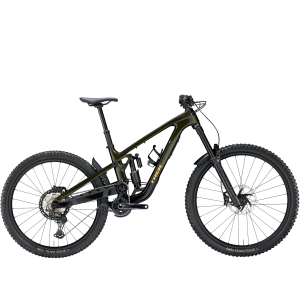

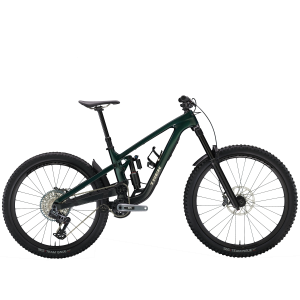
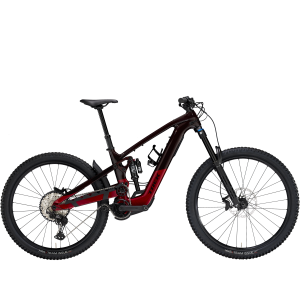
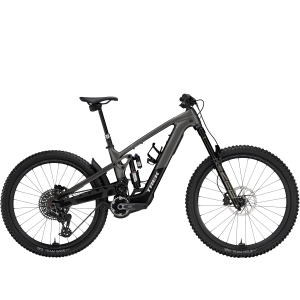
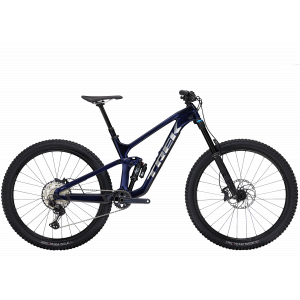
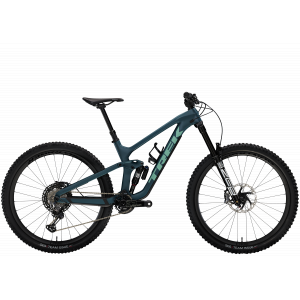
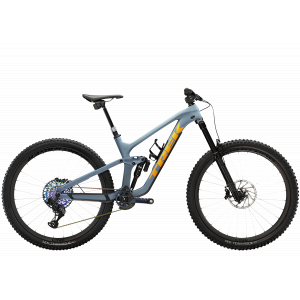
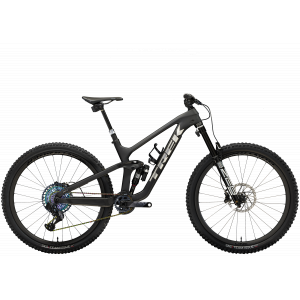


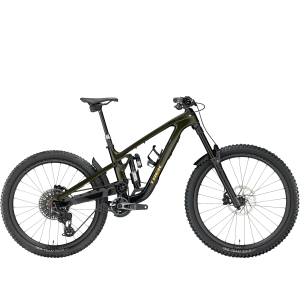



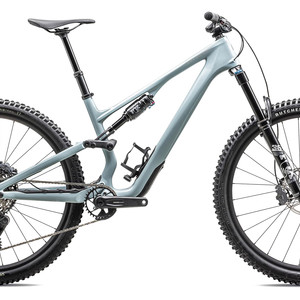


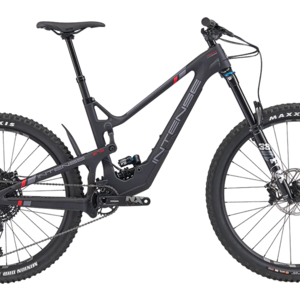









9 comments
Post a reply to: Review - 2018 Trek Slash 9.8 from Vital MTB Test Sessions